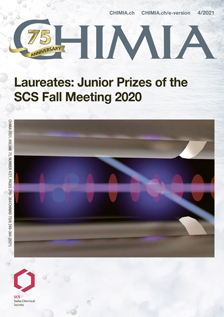The OP Protein Cage: A Versatile Molecular Delivery Platform
DOI:
https://doi.org/10.2533/chimia.2021.323PMID:
33902803Keywords:
Biomimetic, Drug delivery, Encapsulation, Protein engineering, SirnaAbstract
Well-defined containers constructed from multiple protein subunits are a unique class of nanomaterial useful in supramolecular chemistry and biology. These protein cages are widespread in nature, where they are responsible for a diversity of important tasks. As such, producing our own designer protein cages, complete with bespoke functionalities, is a promising avenue to new nanodevices, biotechnology and therapies. Herein, we describe how an artificial, computationally designed protein cage can be rationally engineered using supramolecular intuition to produce new functional capsules. Positive supercharging the interior cavity of this porous protein cage enables the efficient encapsulation of oligonucleotides by electrostatically-driven self-assembly. Moreover, the resulting cargo-loaded cages enter mammalian cells and release their cargo, for example siRNA which modulates gene expression. To expand the cargo scope of this proteinaceous container, a higher level of supramolecular complexity can also be introduced. Encapsulation of anionic surfactants affords protein-scaffolded micelles, which are capable of sequestering poorly water-soluble small molecules within their hydrophobic cores. These hybrid particles stably carry bioactive cargo and deliver it intracellularly, thereby increasing potency. Further development of these genetically-encoded materials is ongoing towards specific applications ranging from cell biology to medicine.Downloads
Published
2021-04-28
How to Cite
[1]
T. G. Edwardson, M. D. Levasseur, D. Hilvert, Chimia 2021, 75, 323, DOI: 10.2533/chimia.2021.323.
Issue
Section
Scientific Articles
License
Copyright (c) 2021 Thomas G.W. Edwardson, Mikail D. Levasseur, Donald Hilvert

This work is licensed under a Creative Commons Attribution 4.0 International License.







